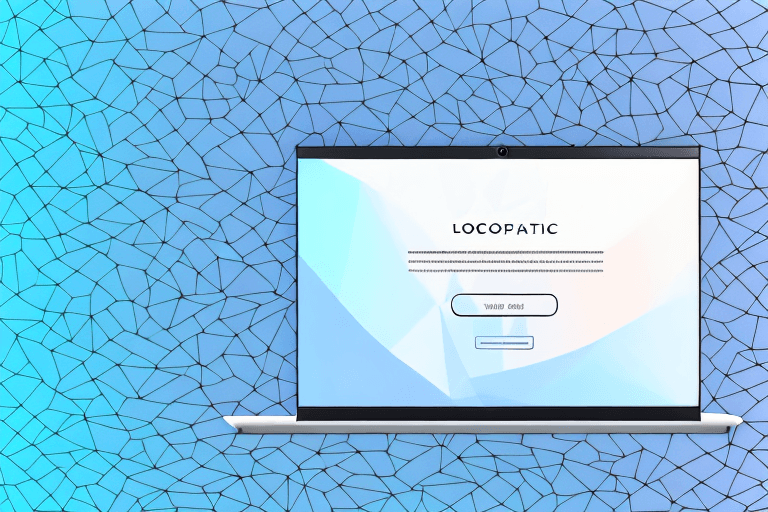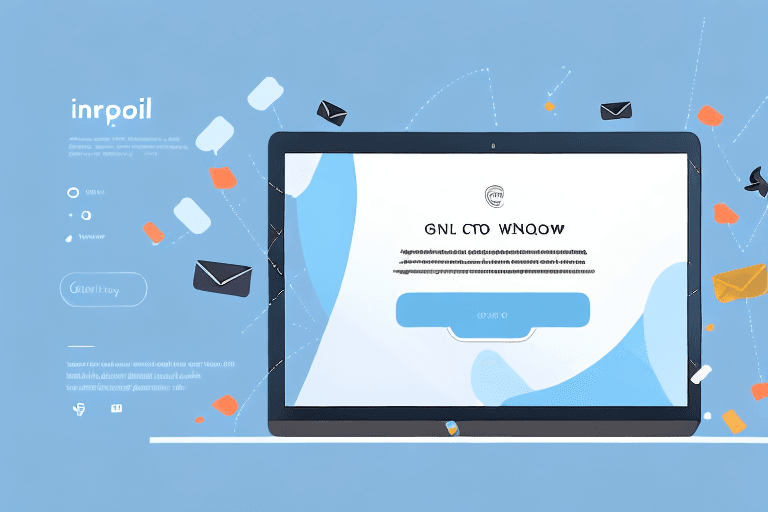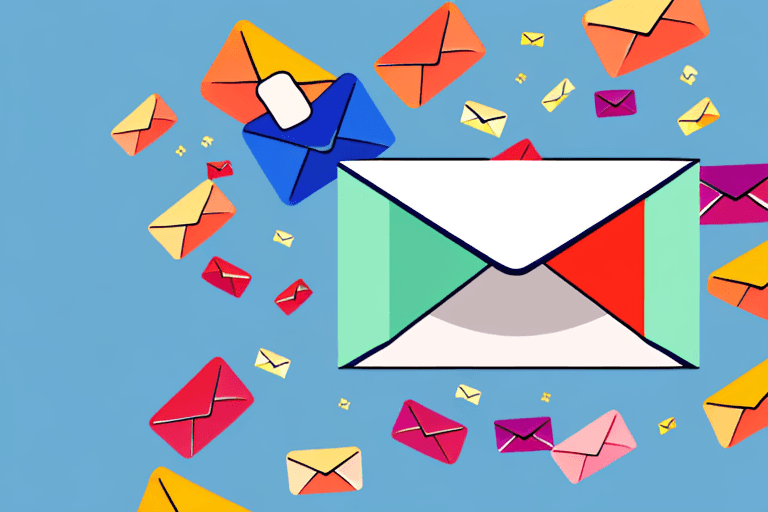In today's highly competitive business landscape, it's becoming increasingly important to connect with potential clients in new and innovative ways. One such way is through cold emailing. But what exactly is cold emailing, and why is it so important for your business? In this article, we'll explore the key elements of a winning cold email template, discuss the importance of crafting a compelling subject line, and provide tips for structuring an effective cold email.
Understanding Cold Emailing
As a business owner, it's important to understand the value of cold emailing. Cold emailing involves reaching out to potential clients or customers via email without any prior relationship or contact. It's a way to introduce yourself and your business and offer your services or products in a way that resonates with the recipient.
One of the biggest advantages of cold emailing is that it allows you to reach a wider audience. With traditional marketing methods, you may only reach a small percentage of your target market. However, with cold emailing, you can reach a much larger audience in a shorter amount of time.
Why Cold Emailing is Important for Your Business
Cold emailing is an effective way to generate leads and increase your revenue. With the right approach and messaging, you can turn cold contacts into warm prospects and, ultimately, loyal customers.
However, it's important to note that cold emailing is not a one-size-fits-all approach. In order to be effective, your cold emails need to be well-written, personalized, and engaging. This means taking the time to research your target audience and crafting a message that speaks directly to their needs and pain points.
When it comes to crafting your cold email, there are a few key elements to keep in mind. First, you want to make sure that your subject line is attention-grabbing and relevant to the recipient. This will increase the likelihood that they will open your email and read your message.
Next, you want to make sure that your opening sentence is personalized and shows that you've done your research. This will help to establish a connection with the recipient and make them more likely to continue reading.
Finally, you want to make sure that your message is clear and concise. Keep in mind that the recipient is likely receiving dozens, if not hundreds, of emails each day. You need to make sure that your message stands out and clearly communicates the value that you can offer.
In conclusion, cold emailing can be a powerful tool for growing your business. By taking the time to craft well-written, personalized, and engaging emails, you can generate leads, increase your revenue, and build lasting relationships with your customers.
The Key Elements of a Winning Cold Email Template
Cold emailing can be an effective way to generate new business leads and establish relationships with potential clients. However, crafting the perfect cold email can be a challenge. In this article, we'll explore the key elements of a winning cold email template that can help you get noticed and land more clients.
Personalization
Personalization is one of the most important aspects of a successful cold email. It's essential to address the recipient by their name and mention something specific about their company or industry. This demonstrates that you've done your research and are genuinely interested in working with them.
But personalization goes beyond just using the recipient's name. It means tailoring your messaging to their needs and pain points. By highlighting how your services or products can solve a specific problem they're facing, you can show that you're not just pitching a generic solution, but one that's tailored to their unique situation.
For example, if you're reaching out to a marketing manager, you might mention how your services can help them increase their website traffic or improve their conversion rates. By showing that you understand their specific goals and challenges, you can increase the chances of getting a response.
Clear and Concise Messaging
When it comes to cold emails, less is often more. The most effective emails are those that get straight to the point. Avoid lengthy introductions or vague language. Instead, focus on providing a clear and concise message that highlights your value proposition and the benefits of your services or products.
But being concise doesn't mean sacrificing detail. Make sure you provide enough information about your offer to pique the recipient's interest and encourage further conversation. This might include a brief overview of your services, a list of your key features and benefits, or a case study that demonstrates your expertise.
Remember to keep your language simple and easy to understand. Avoid using technical jargon or industry-specific terms that the recipient might not be familiar with. Your goal is to make it as easy as possible for them to understand what you're offering and why they should care.
A Strong Call-to-Action
Every cold email should have a clear call-to-action (CTA). This is what moves the conversation forward and gets the recipient to take action. Your CTA should be specific and actionable, and provide clear instructions on what the recipient needs to do next.
For example, you might ask the recipient to schedule a call, set up a meeting, or request more information. Whatever your CTA is, make sure it's easy for them to take the next step. This might include including a link to your calendar or a contact form, or simply asking them to reply to your email with their availability.
Social Proof and Credibility
One way to build credibility and establish trust with the recipient is by including social proof in your cold emails. This can be in the form of testimonials, case studies, or other evidence that demonstrates your expertise and the value you've provided to previous clients.
By showcasing your past successes, you can help the recipient feel more confident in working with you and make it easier for them to say yes. This might include quotes from satisfied clients, statistics that demonstrate the results you've achieved, or a list of notable companies that you've worked with.
Remember, the key to including social proof is to make it relevant to the recipient. If you're reaching out to a healthcare company, for example, you might include case studies that demonstrate your experience in the healthcare industry. This will help them see that you understand their specific needs and challenges.
In conclusion, by following these key elements of a winning cold email template, you can increase your chances of getting noticed and landing more clients. Personalization, clear and concise messaging, a strong call-to-action, and social proof and credibility are all essential components of a successful cold email campaign.
Crafting the Perfect Subject Line
The Importance of a Compelling Subject Line
The subject line is the first thing the recipient sees when they receive your cold email, and it can make or break whether they open it or not. That's why it's crucial to craft a subject line that's compelling, intriguing, and piques their curiosity.
When a recipient receives an email, they are bombarded with countless other emails in their inbox. Therefore, a subject line that stands out from the rest is essential. A compelling subject line can make the difference between your email being opened and read, or being sent straight to the trash bin.
Tips for Writing Effective Subject Lines
To write an effective subject line, try to include a specific benefit or offer in the first few words. This will give the recipient a clear idea of what they can expect from the email and why they should open it. Also, consider using humor or a question to grab the reader's attention. An intriguing question can spark curiosity and make the recipient want to read more.
Another effective strategy is to create a sense of urgency or scarcity. By using phrases like "limited time offer" or "only X spots left," you can create a sense of FOMO (fear of missing out) and encourage the recipient to take action. This can be especially effective in sales emails, where the goal is to get the recipient to take a specific action, such as making a purchase or scheduling a call.
Examples of Successful Subject Lines
Here are a few examples of successful subject lines:
- "[Industry-specific] Insights Report: [Benefit or offer]" - This subject line is effective because it offers a specific benefit to the recipient and uses the industry-specific language to make it more relevant.
- "Quick question about [Industry-specific pain point]" - This subject line is effective because it piques the recipient's curiosity and offers a solution to a pain point they may be experiencing.
- "[Name of mutual contact] recommended we connect" - This subject line is effective because it leverages the power of social proof and establishes a connection with the recipient.
- "[Recipient's company name]: Earn 2X more with [Your company's product or service]" - This subject line is effective because it offers a specific benefit to the recipient and uses personalization to make it more relevant.
Remember, the subject line is the first impression the recipient will have of your email. Make it count by crafting a compelling, intriguing, and relevant subject line that will make the recipient want to open and read your email.
Structuring Your Cold Email Template
The Introduction
The introduction should be short and sweet. Start with a personalized greeting that includes the recipient's name and some context about how you found them. Then, briefly introduce yourself and your business and provide a high-level overview of your offer.
The Body
The body of your cold email is where you'll provide more detail about your offer and its benefits. Use this space to address the recipient's pain points and explain how you can solve their problem.
Include any relevant social proof or testimonials, and provide a clear CTA that encourages the recipient to take action.
The Closing
End your cold email with a polite and friendly closing that reiterates your offer and encourages the recipient to get in touch. Include your contact information and a link to your calendar or contact form.
With these key elements in mind, you'll be well on your way to creating a winning cold email template that engages and converts even the coldest of prospects.




